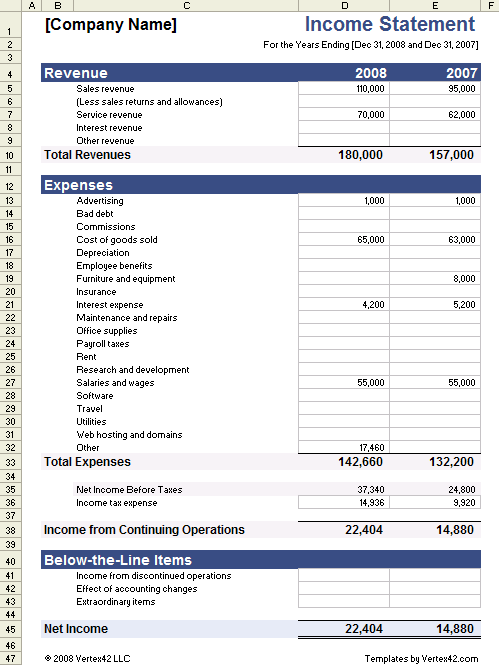The other central document of
accounting is an income statement. This
represents a period of time, rather than the moment-in-time of the balance
sheet. If all is working properly, the income statement should give investors
an idea of the underlying processes that have made the present condition of the
company what it is.

We won’t spend a lot of time on the
income statement, simply because much of what we might say about it we’ve
already said. The issues that arise in compiling an income statement look familiar
to anyone who understands the latest balance sheet.
For example, the expenses part of an
income statement should indicate the costs of goods sold (COGS), that is, the
costs directly attributable to such of the goods that have gone out the door in
the hands of a customer over the past year or quarter, separately from all the
other costs, especially the “general and administrative expenses.”
The issues that arise when valuing
COGS are the same issues that arise when valuing inventory in the preparation of the balance
sheet, and we’ll say no more about them here.
Likewise, the issues that arise when
we try to determine the amount of a year’s or quarter’s depreciation, in the
expenses portion of the balance statement, are the same issues that we mentioned
when we discussed the value of the equipment itself, as an asset on the balance
sheet.
Then there is the bad debt expense.
Some of the people to whom I extended store credit will never pay me back. I
could hire a collection agency, but that may in many cases be a larger expense
than it’s worth. So, suppose I just write them off after a certain period of
time has passed. That’s a bad debt expense on the income statement, and it is a
charge to the receivables account on the balance sheet.
I should be recovering my overhead
costs from the pricing of my product. If I’m not, then I’m running a
going-out-of-business sale. But if I am recovering the costs of overhead (our
conveyor belt), I am liquidating that conveyor belt. It is turning year by year
from a tangible asset into cash: enough cash to be used to buy another conveyor
belt in due course.
Expenses (and losses) raise some
convoluted issues of recognition and valuation. A critical point is that a
business can’t wait until it has to pay some sum of cash before it records an
expense. The expense may be incurred long before that, or it may not be
incurred until sometime thereafter.
Because expenses may be incurred
(they may accrue) before any payment must be made, accountants have to live
with uncertainty.
Comments
Post a Comment